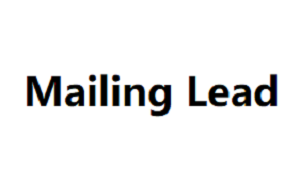It seems that “posturing” , the art of appearing more than one really is in order to brag. Phenomenon that is far from limited to Instagram and other social networks. And those who practice “posturing” (often with surprising saltiness laced with impudence) are not only individuals but also companies, which also love to pretend to be what they are not. The “About us” section of many companies’ websites is filled to the brim with photographs of supposed employees who do not actually exist. Relying on such images, generated by artificial intelligence, companies try to appear larger than they really are.
Many companies believe that their credibility takes
An investigation carried out by Evan category email list Ratliff and published by Insider concludes that a good number of companies use generative adversarial network (GAN) software to illuminate photos generated by artificial intelligence that they then publish in the “About us” section of their websites to transfer the impression (totally Pharisee) of the non-existent people portrayed there are part of its staff. In the course of his investigation Ratliff had the opportunity to contact Lukas. The owner of an Austrian company focused on exam preparation and named takeIELTS. He confirmed that he had indeed used several “fake” photographs in the section “About us” from your company’s website. Ratliff noticed several anomalies in the takeIELTS “workers.
They pretend to have more employees
One of them was wearing, for example, only Mailing Lead one earring. Another had one side of his face shaved more than the other. Many companies believe that their credibility. Takes a hit when they pretend to have more employees. Although takeIELTS has a plethora of positive reviews from 100% genuine customers, Lukas pointed out to Ratfliff that having a larger staff helped improve his company’s credibility. “It’s something that sends the right message to the viewer that we are a big company with a lot of workers,” says Lukas. The reasons given by Lukas are those that most commonly motivate companies to resort to artificial intelligence to falsify the photographs of the “employees” that make their way into the “About us” section of their websites.

